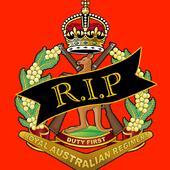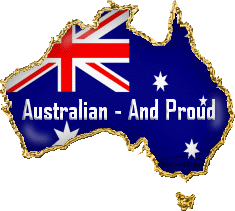An abridged version of an article by Stuart McCarthy
A Senior Army Officer Who Dismissed Sex Abuse Complaints as Alcohol-Related Was Appointed to Lead SAS “Reforms” Ahead of the Brereton War Crimes Report
The appointment of recently retired Defence Chief General Angus Campbell as Ambassador to Belgium, NATO, and the European Union has reignited a long-standing sex abuse scandal within the Australian Army. The controversy, centred around Campbell’s tenure as a commanding officer, highlights deep-rooted institutional failures in addressing sexual abuse and raises further concerns about senior leadership accountability in the Australian Defence Force (ADF).
The Allegations Against Campbell
At the turn of the century, Campbell commanded the 2nd Battalion, the Royal Australian Regiment (2 RAR), during which time serious allegations of sexual abuse emerged. A decorated senior army officer dismissed complaints about sexual abuse perpetrated by a Sergeant, later convicted of multiple rapes and sexual assaults. Despite this, Campbell was later appointed to lead internal Defence “reforms” of the Special Air Service Regiment (SAS) ahead of Major General Paul Brereton’s 2020 report on alleged war crimes in Afghanistan.
Campbell later admitted his initial conclusions that the complaints were alcohol-related rather than sexual in nature were incorrect. However, three decades after the abuse in Townsville-based 2 RAR, survivors and their families continue to call for an independent investigation into further allegations of sexual abuse involving the same former Sergeant.
Calls for an Independent Investigation
The survivor group has presented credible accounts of additional alleged rapes and sexual assaults occurring in the mid-1990s within 2 RAR. They are urging Prime Minister Anthony Albanese to initiate an independent inquiry, separate from the military justice system, to examine potential cover-ups by the chain of command.
In 2012, then-Defence Minister Stephen Smith apologised in Parliament to victims of sexual abuse in the ADF following a 1,500-page review by law firm DLA Piper. The review uncovered hundreds of credible allegations of abuse, prompting the establishment of the Defence Abuse Response Taskforce (DART). The taskforce received 1,723 plausible complaints of sexual abuse and referred 133 cases, involving 191 separate allegations, to state and territory police. However, it remains unclear how many of these referrals resulted in prosecutions.
Professor Ben Wadham, a defence abuse expert, states that many institutional abuse cases in the ADF have not been resolved through the criminal justice system. Wadham, director of the ‘Open Door’ research initiative at Flinders University, provided key testimony on institutional abuse to the Royal Commission into Defence and Veteran Suicide (DVSRC).
Continued Leadership Failures
In 2021, Campbell warned a class of Australian Defence Force Academy (ADFA) officer cadets to avoid presenting themselves as “attractive” while consuming alcohol to prevent falling “prey” to sexual abuse. His comments were widely condemned as victim-blaming. Campbell later claimed his remarks were misinterpreted.
The survivor group also accuses senior Defence leadership of the same “bystander behaviour” that generals blamed for enabling Australian special forces war crimes in Afghanistan. Military police involved in the initial 2 RAR investigations raised concerns about similar misconduct at the 1st Recruit Training Battalion (1 RTB) in Wagga Wagga, where the convicted Sergeant had previously served as an instructor.
Institutional Barriers to Reporting Abuse
In 1994, a 2 RAR soldier reported two sexual assaults by the Sergeant to then-Major Shane Caughey, a company commander. Defence documents reveal Caughey dismissed the complaint, citing the absence of any indication the Sergeant was homosexual. In 1995, Queensland Police charged the Sergeant with raping a soldier at a civilian residence. A second soldier subsequently came forward with similar allegations. The Sergeant was later convicted of multiple offences and sentenced to imprisonment.
Caughey received a “show cause” notice in 2001 after an investigation found that the rape at the civilian residence could have been prevented had the original complaints been handled more rigorously. While denying any cover-ups, Caughey acknowledged that his initial assessment—that the incidents were alcohol-related rather than sexual—was incorrect.
Despite this, Caughey was later promoted to Major General and, in 2019, was appointed as an independent “special forces advisor” to oversee SAS reforms in response to the Brereton inquiry’s findings on war crimes. His appointment coincided with then-Chief of Army Lieutenant General Rick Burr’s vocal criticisms of lower-ranking soldiers for failing to prevent war crimes in Afghanistan.
The Broader Implications
Military and legal experts argue that the handling of the 2 RAR abuse cases exemplifies broader systemic failures in the ADF’s approach to institutional abuse. Professor Wadham asserts that the ADF remains incapable of holding itself accountable, making external intervention necessary.
Military lawyer Dr. Glenn Kolomeitz argues that an independent inquiry into the 2 RAR scandal should have the powers of a royal commission to seize documents, protect witnesses, and address jurisdictional issues arising from military-based sex offences. Kolomeitz also drafted Senator Jacqui Lambie’s 2023 referral to the International Criminal Court (ICC) for an investigation into command responsibility for war crimes in Afghanistan.
The Albanese Government’s Response
The survivors and their families claim senior Defence officers engaged in a culture of “impunity, hypocrisy, and arse-covering,” further exacerbated by the Albanese Government’s reluctance to act. They cite the suppression of an oversight report critical of the Brereton inquiry’s failure to hold senior officers accountable.
Although the sexual abuse at 2 RAR occurred before Campbell took command in 2001, the survivors accuse him and his peers of “turning a blind eye” to the complaints and failing to support affected soldiers. Campbell later served as Australia’s national commander in the Middle East and Afghanistan before being appointed Chief of Army in 2015. His referral of “rumours” of war crimes to the Inspector-General of the Australian Defence Force (IGADF) in 2016 triggered the Brereton inquiry.
Campbell and Burr have maintained that senior Defence leadership was unaware of special forces war crimes in Afghanistan, a claim widely disputed. One of the most notorious war crimes documented in the Brereton report was publicly reported to the Australian government in 2012, four years before Campbell’s referral.
MWM has approached Albanese, Defence Minister Richard Marles, and Defence Personnel Minister Matt Keogh for comment regarding the 2 RAR survivors’ calls for an independent inquiry. While Defence acknowledged receipt of the inquiry, no response has been provided.
Conclusion
The appointment of Angus Campbell to a high-profile diplomatic role has reignited scrutiny over his handling of sex abuse complaints and his broader leadership record in Defence. Survivors and their families demand an independent investigation into past abuses, arguing that systemic failures and cultural barriers continue to protect perpetrators at the highest levels of the ADF. With mounting pressure, the Albanese Government faces a critical decision on whether to take action or allow the controversy to persist unaddressed.
Abridged Article by Stuart McCarthy is a medically retired Australian Army officer whose 28-year military career included deployments to Afghanistan, Iraq, Africa, Indonesia and Papua New Guinea. Stuart is an advocate for veterans with brain injury, disabilities, drug trial subjects and abuse survivors.











